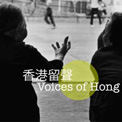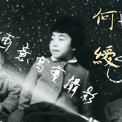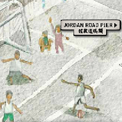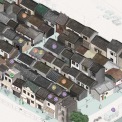 Collections
Collections Home of the Past: From Squatters to Public Housing
Home of the Past: From Squatters to Public Housing Resettlement Estates
Resettlement Estates Problems & Difficulties
Problems & Difficulties
Open space in many of the resettlement estates was designed at the unbelievably low figure of 0.02 acres (0.008 ha.) per 1,000 persons. This had proved to be the major handicap to rehabilitation of the interval environment.
Due to minimal attention given to orientation, prevailing breezes and micro-climatic peculiarities that differed from site to site, and in many cases the standardized plans and layouts, the result was some extremely unpleasant environments of many early housing estates.
Over the years the tenants had added to their possessions until most rooms were overcrowded with furniture and general household items. The installation of their own electrical circuits to supply TV sets, refrigerators, lights, etc, led to many problems of safety of the blocks. Sometimes, informal structures erected in the exterior of the blocks had became a permanent scene. Until 1972 Hong Kong legislation dictated that community TV aerials could not be used and this led to the proliferation of antennae that were to become characteristic of the Hong Kong skyline.
Rubbish disposal was another problem. Many tenants simply threw rubbish over the balconies and this in turn built up on the roofs of structures (many were illegal) at ground level. The small open spaces that did exist had open rubbish collection receptacles within them and this together with the over-usage of bitumen produced an extremely unpleasant environment.
From Mark I through to Mark VI little if any improvement was made in interior finishes. The tenants usually provided the major improvements themselves. Little could be done to provide visual and audio separation between individual members of a family group and between adjacent neighbours.
As the estates grew in size and number, so did the very large number of services demanded by the tenants. Illegal hawking had gradually become the most notable activities in any resettlement estate. Hawkers sold a wide range of locally produced and imported commodities, including 'restricted' or 'prohibited' (which applied to licensed hawkers) goods like herb tea, non-bottled drinks, soft ice cream, cut fruit, cooked food, meat, raw fish, etc. Since 1958 hawker bazaars were being constructed to accommodate some of the illegal hawkers who were crowding the open spaces of the estates. But this did not eliminate the itinerant hawkers who still erected makeshift structures wherever they could. Another contributing factor to the rampant illegal hawking was the relatively loose attitude towards management adopted by the staff of the Resettlement Department in general.
Due to minimal attention given to orientation, prevailing breezes and micro-climatic peculiarities that differed from site to site, and in many cases the standardized plans and layouts, the result was some extremely unpleasant environments of many early housing estates.
Over the years the tenants had added to their possessions until most rooms were overcrowded with furniture and general household items. The installation of their own electrical circuits to supply TV sets, refrigerators, lights, etc, led to many problems of safety of the blocks. Sometimes, informal structures erected in the exterior of the blocks had became a permanent scene. Until 1972 Hong Kong legislation dictated that community TV aerials could not be used and this led to the proliferation of antennae that were to become characteristic of the Hong Kong skyline.
Rubbish disposal was another problem. Many tenants simply threw rubbish over the balconies and this in turn built up on the roofs of structures (many were illegal) at ground level. The small open spaces that did exist had open rubbish collection receptacles within them and this together with the over-usage of bitumen produced an extremely unpleasant environment.
From Mark I through to Mark VI little if any improvement was made in interior finishes. The tenants usually provided the major improvements themselves. Little could be done to provide visual and audio separation between individual members of a family group and between adjacent neighbours.
As the estates grew in size and number, so did the very large number of services demanded by the tenants. Illegal hawking had gradually become the most notable activities in any resettlement estate. Hawkers sold a wide range of locally produced and imported commodities, including 'restricted' or 'prohibited' (which applied to licensed hawkers) goods like herb tea, non-bottled drinks, soft ice cream, cut fruit, cooked food, meat, raw fish, etc. Since 1958 hawker bazaars were being constructed to accommodate some of the illegal hawkers who were crowding the open spaces of the estates. But this did not eliminate the itinerant hawkers who still erected makeshift structures wherever they could. Another contributing factor to the rampant illegal hawking was the relatively loose attitude towards management adopted by the staff of the Resettlement Department in general.



